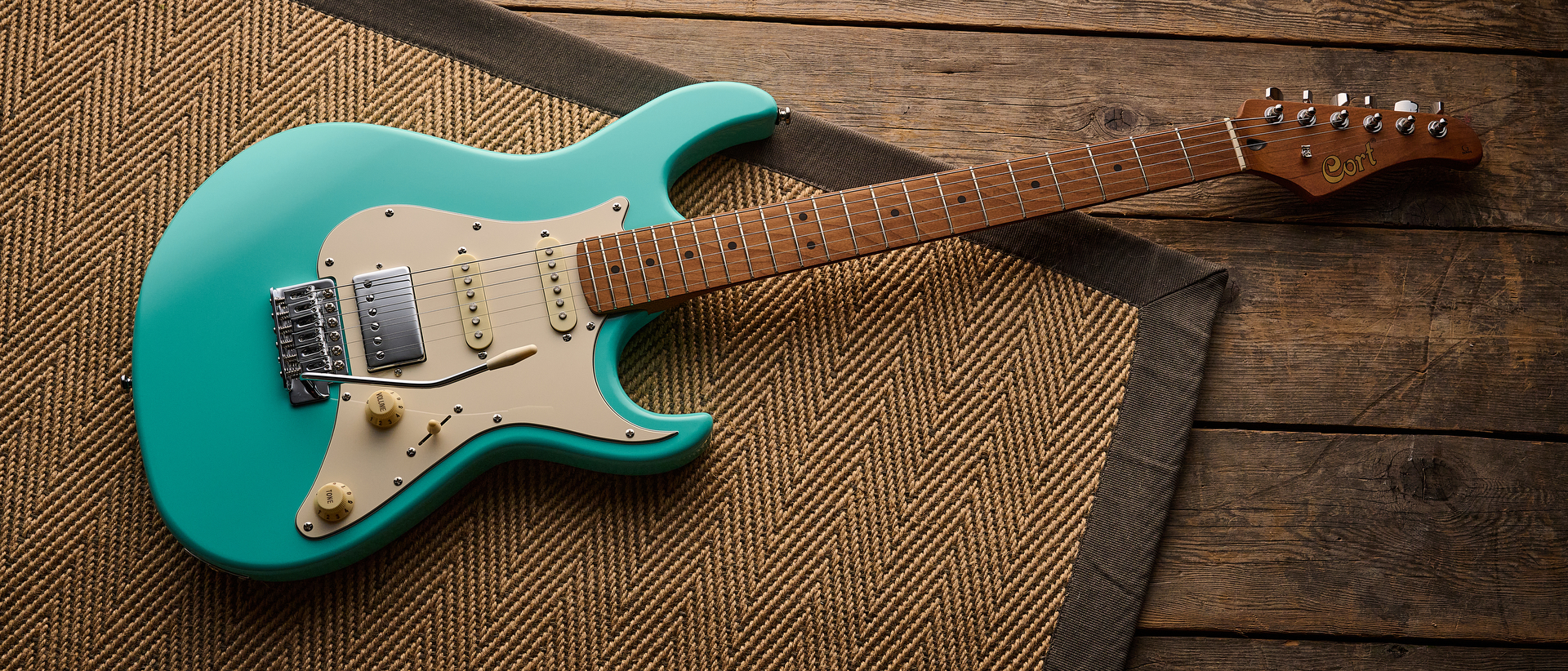Best guitar slides 2025: every budget and material covered, plus how to choose the right slide for you
Getting into the bluesy world of slide guitar? From Shubb and Dunlop, to Taylor and Ernie Ball, these are our top choices
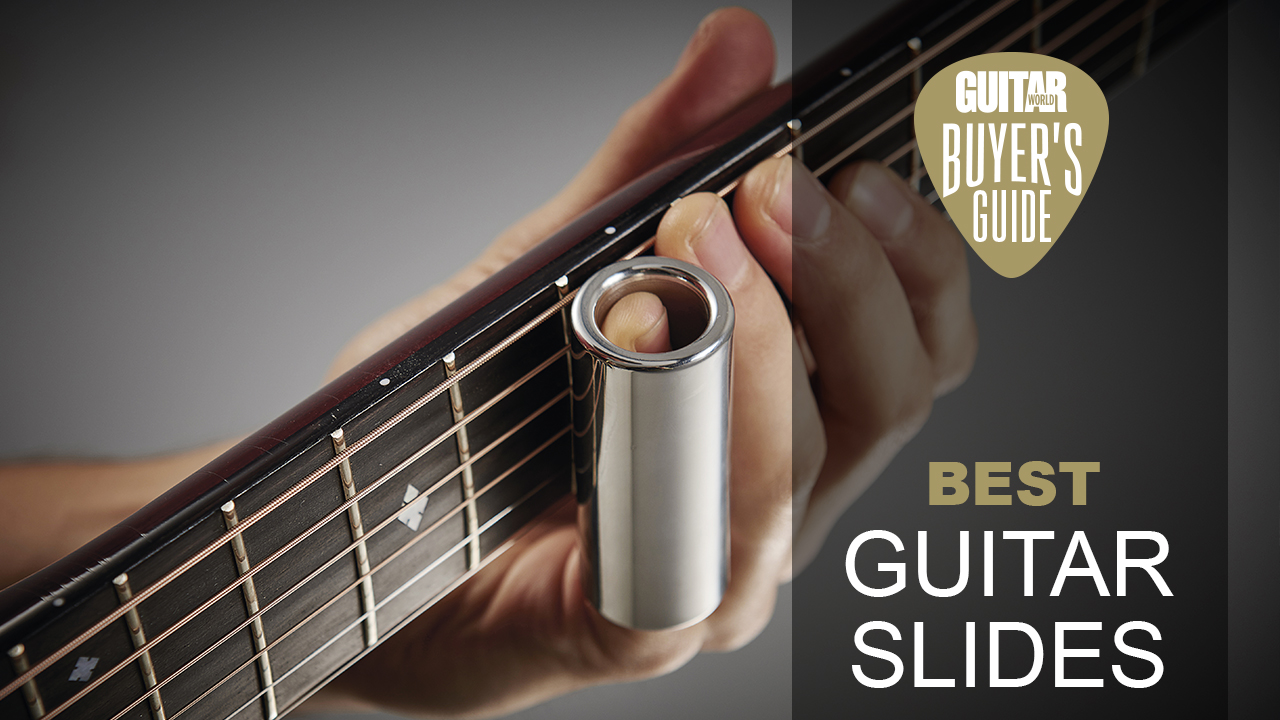
Today we are lucky to have our pick of the best guitar slides in a variety of materials and for a range of budgets, but the slide as we know it has humble origins. First utilized by players of the African folk instrument called the diddley bow, the slide graduated to the guitar after being pioneered by blues legends including Robert Johnson and Elmore James. Since then, players have carved their own style with the assistance of the slide and Jack White, Joe Perry and Seasick Steve are a few modern artists who have done so to great effect.
It’s no coincidence that the slide has stuck around through the evolution of the guitar and has been adopted by a huge range of inspiring players. Slide guitar enables players to improve their fingerpicking game and is perhaps the most accessible way to start exploring open tunings. Most of all, the slide is a great outlet for musical expression, allowing you to hear all of the notes between the frets and to create vocal-like inflections.
Slides come in all different shapes, sizes and materials, and with brands like Dunlop, Ernie Ball and D’Addario offering a variety of slide types, how do you decide which one to go for? That’s where we step in. Whether you’re the next Ry Cooder or are just finding your feet in the world of slide guitar, there’s an option on our list to suit you.
Our top picks
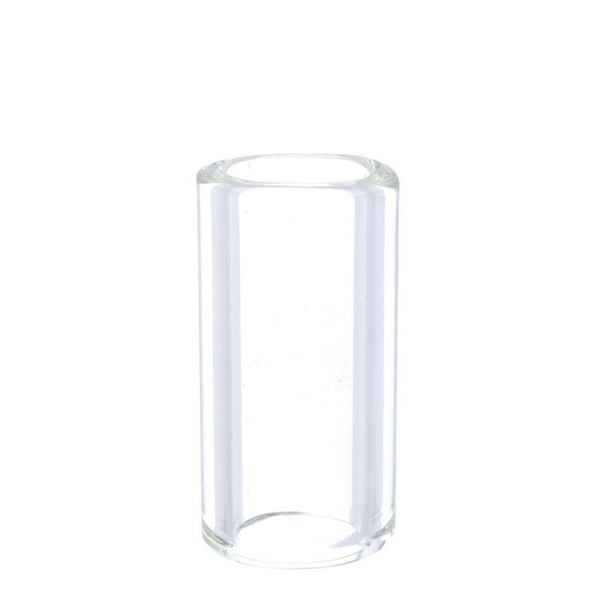
Since there are so many great guitar slides out there that can serve a variety of purposes and playing styles, whittling down the top choice is made tricky. However, if we were forced to pick just one it would be the Ernie Ball Glass Guitar Slide. This is the best all-rounder on our list, the glass is thick and sturdy, it produces a brilliant chime on acoustic guitar and offers a smooth glissando on electric.
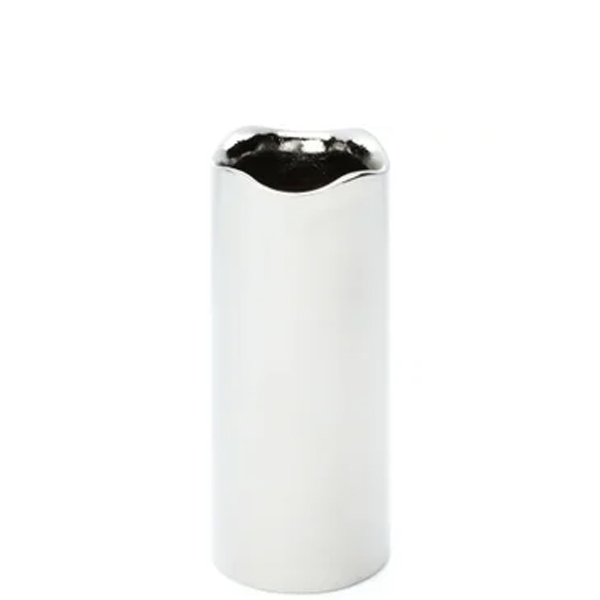
For the player wanting to spend a little more, the MagSlide Magnesium MS-2 is a unique premium option. Since it’s made from magnesium, the slide is lightweight, offers loads of sustain and works great on lower-action guitars.

The Dunlop 222 Brass Slide and a bold hollowbody guitar are a match made in heaven for rock ’n’ roll and electric blues. The brass produces a certain harshness in tone and, coupled with an electric guitar through an overdriven tube amp, delivers fantastically raw tones.
Best overall
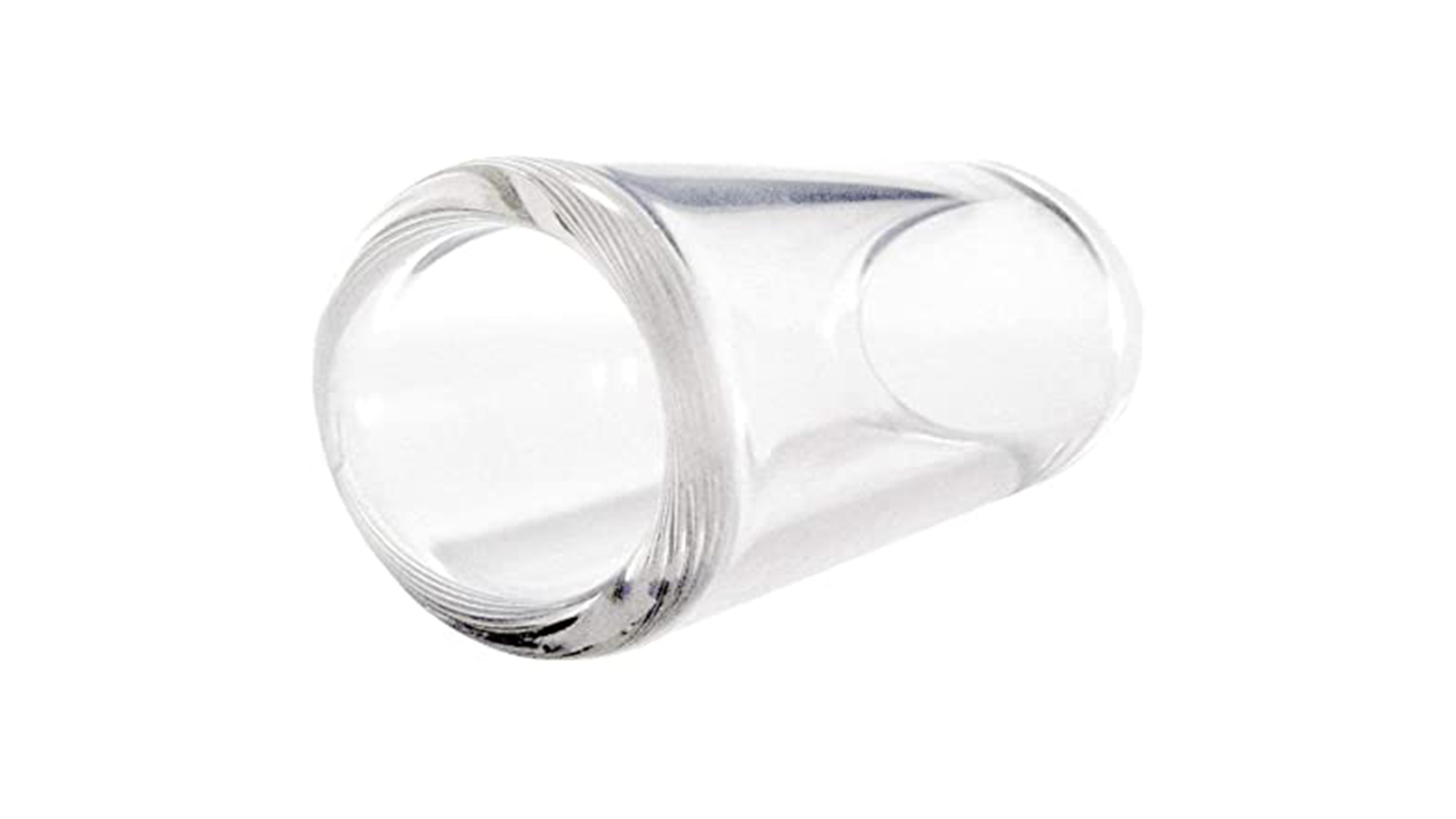
1. Ernie Ball Glass Guitar Slide
Our expert review:
Specifications
Reasons to buy
Reasons to avoid
The Ernie Ball Glass Slide is the best all-rounder on our list. Made from Borosilicate glass, this slide is incredibly sturdy – perfect for those who are a little wary of the fragility of a traditional glass slide. Better yet, Borosilicate has fewer imperfections than standard glass, meaning it glides across the strings with ease.
We really love the sound this slide produces. It's smooth and warm with a breathy mid-range that comes into its own when used with an acoustic guitar. In addition, the slide’s walls are quite thick and dense, which certainly helps note sustain, giving you the confidence to play those long held notes for as long as you wish.
That said, we can see why this extra bulk and weight may be uncomfortable for players with smaller fingers. This slide is quite wide internally, so bear that in mind if your fingers are skinny.
On the plus side, this is a very modestly priced slide and a great option for those wanting to dip their toes in the world of slide guitar.
Best premium
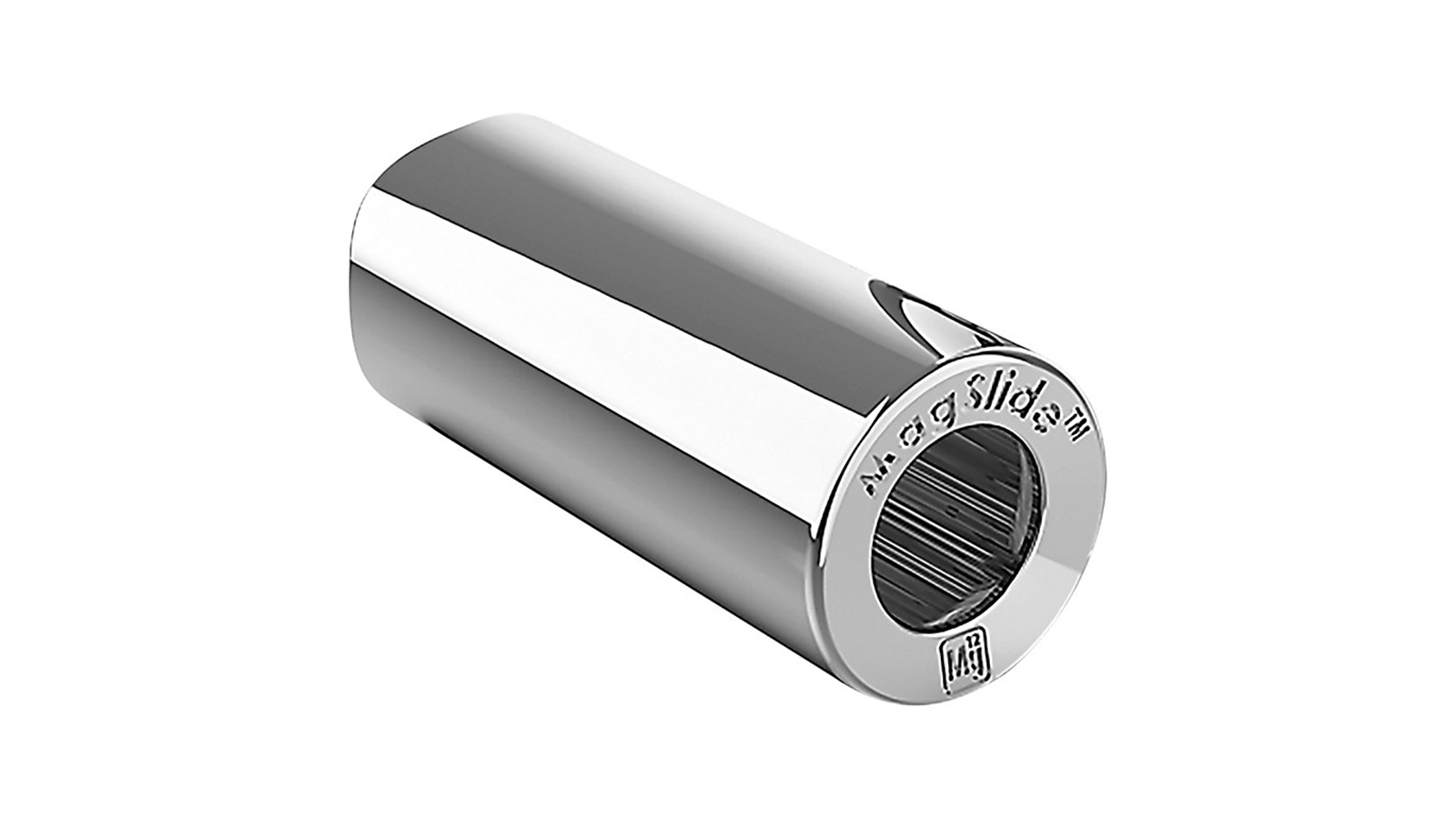
2. MagSlide Magnesium Guitar Slide MS-2
Our expert review:
Specifications
Reasons to buy
Reasons to avoid
MagSlide has a pretty unique product on its hands – it’s the only magnesium slide on the market that we know of. This unusual material makes for a lightweight and durable slide that’s so comfortable it will make quick work for your open G country licks.
Now, many players fear a slide that’s too lightweight can lead to a less-than-favorable tone. However, you needn’t worry with the MagSlide. Magnesium’s inherent dampening qualities produce a lovely warm note when struck and the heavy wall thickness and density really help sustain.
Since it’s so weightless, it works great on electric guitars and acoustics with a lower action as it won’t rattle off the fretboard like a heavy slide would. Unlike glass, metal won’t smash, so taking this on the road is a safe bet.
The indentations on the bottom allow your hand to bend more naturally when playing and the inner walls have material to stop the slide from spinning. This is a premium slide, which comes with a premium price tag. For those unsure of the benefits of magnesium, the price may put you off.
Best brass slide
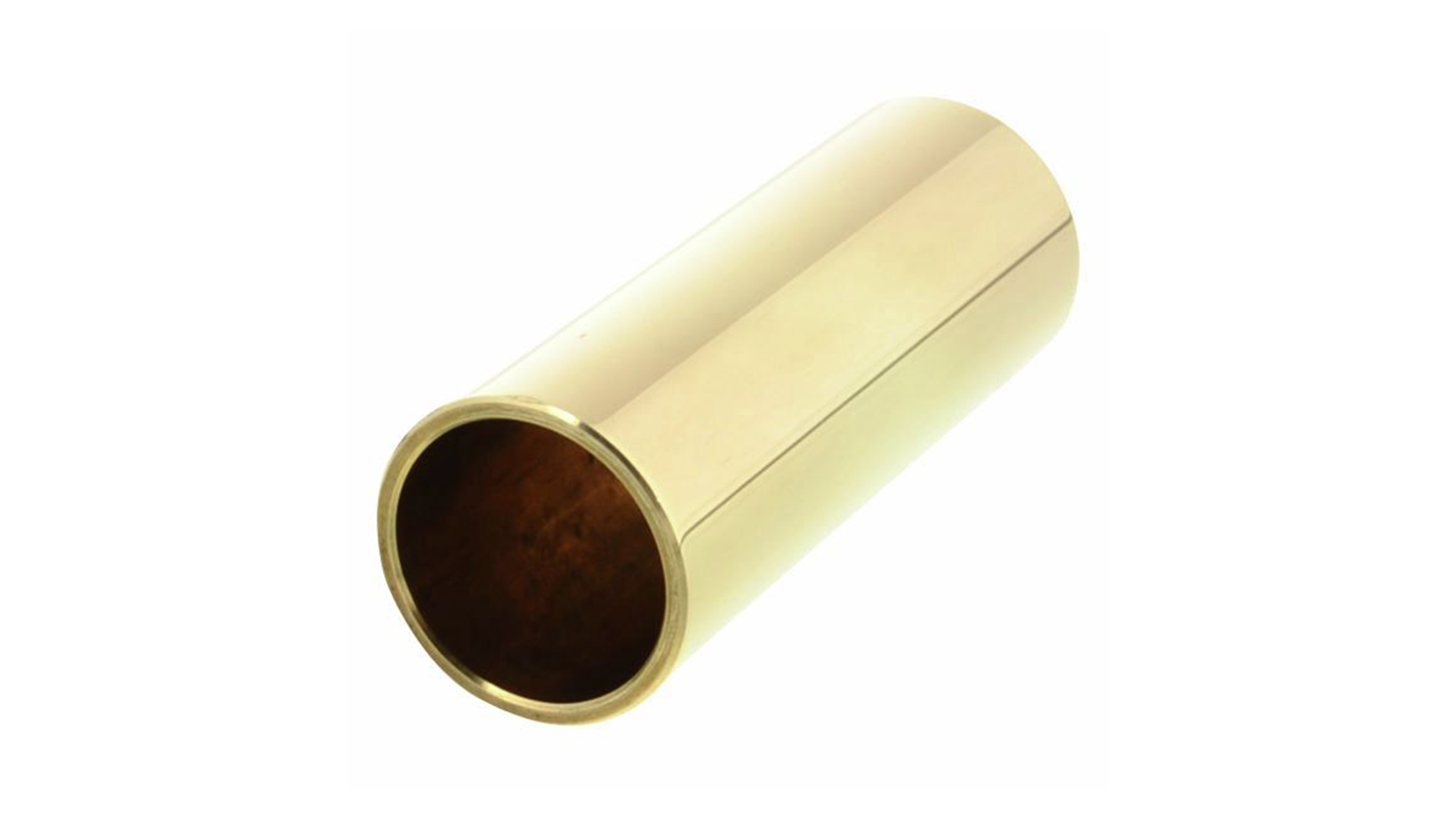
3. Dunlop 222 Brass Slide
Our expert review:
Specifications
Reasons to buy
Reasons to avoid
The Dunlop 222 Brass Slide and a bold hollowbody guitar are a match made in heaven for rock ’n’ roll and electric blues. The brass produces a certain harshness in tone and, coupled with an electric guitar through an overdriven tube amp, delivers fantastically raw tones.
This slide is surprisingly light, weighing in at a mere 22g, so fast lead lines and ripping solos are made easier thanks to its manoeuvrability. Tonally, there is real clarity and the bite of each note is pleasing and pronounced.
One thing we’ve found is the walls of this Dunlop slide feel quite thin. Dunlop categorizes it as ‘medium’ thickness but it feels a little slimmer than that to us. It’s also quite a tight fit, so if you have large hands it may work best on the pinky finger rather than the ring finger.
Best porcelain
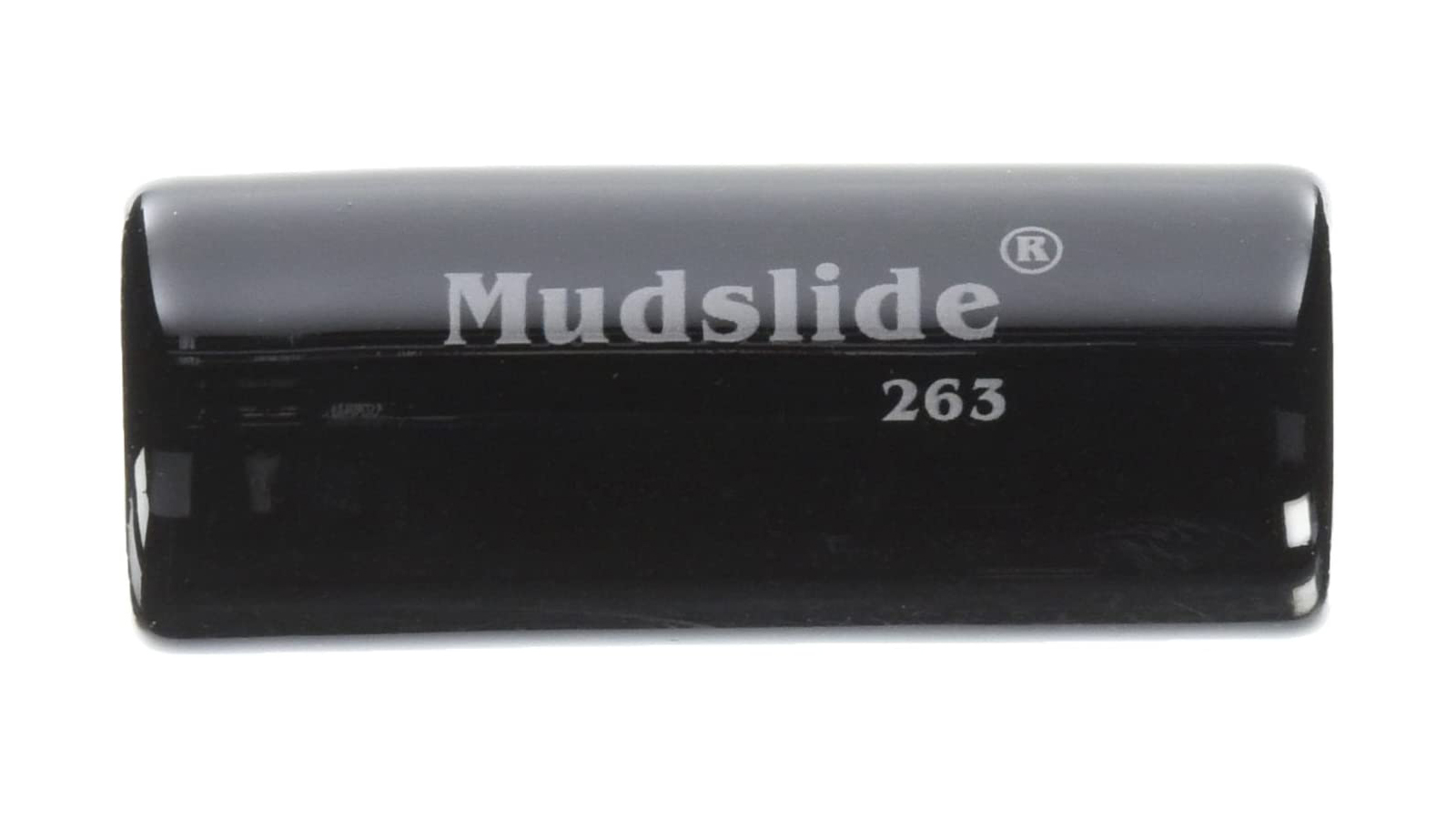
4. Jim Dunlop Mudslide
Our expert review:
Specifications
Reasons to buy
Reasons to avoid
Porcelain is an interesting material for a slide, sonically sitting somewhere in-between metal and glass. The Dunlop Mudslide is really well-balanced and has a rich, deep tone that is less harsh than brass – and you could say it is not quite as buttery as a glass slide.
The outer wall has a glossy exterior to help aid a smooth glide across the strings, while on the inside it has a matted texture to help keep the slide in place on your finger. The Mudslide is rather bulky compared to others on our list and its large outer diameter means you have to be bang-on with your notes. It isn’t very forgiving, so perhaps not a beginner’s option.
If there is one thing that has to be said about porcelain slides, it’s their fragility. Drop this thing on hard ground and you’ll have to get the dustpan and brush out. So maybe grab one of the cheaper options on this list as a backup.
Best lightweight option
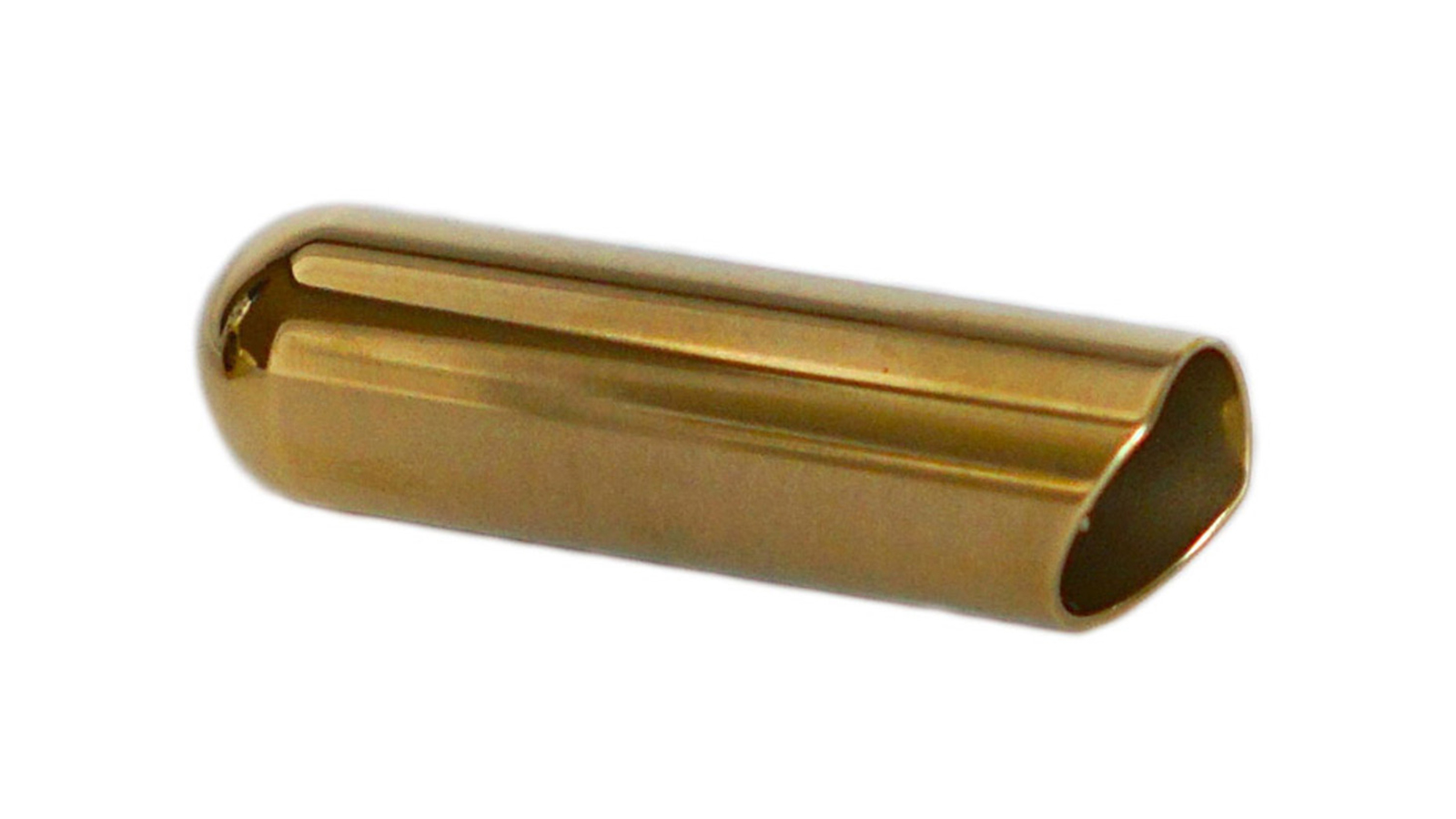
5. The Rock Slide Ariel Posen Signature Slide
Our expert review:
Specifications
Reasons to buy
Reasons to avoid
Ariel Posen is one of the most revered slide players today. Hopping on board with The Bros. Landreth in 2013, Posen’s ear-catching phrasing is most notable when playing with his signature slide.
Constructed from brass, this is a pretty lightweight option, with thin, tapered walls that are slimmer at the base and get a lot thicker and denser towards the top. From our experience, due to the slim taper, the slide will probably fit best on your pinky, especially if you have bigger hands.
The secret weapon of the Rock Slide is the generous cutaway at the bottom of its base. This unique design allows users to bend their hand more naturally without the slide digging into the palm. The ball tip on the top helps keep the slide in place and adds a bit of weight to an already thin slide helping resonance and longer vibrato.
This slide is ideal for electric players thanks to its gritty tone and light weight, while it won’t automatically make you play like Posen, it’ll certainly help.
Best wooden slide
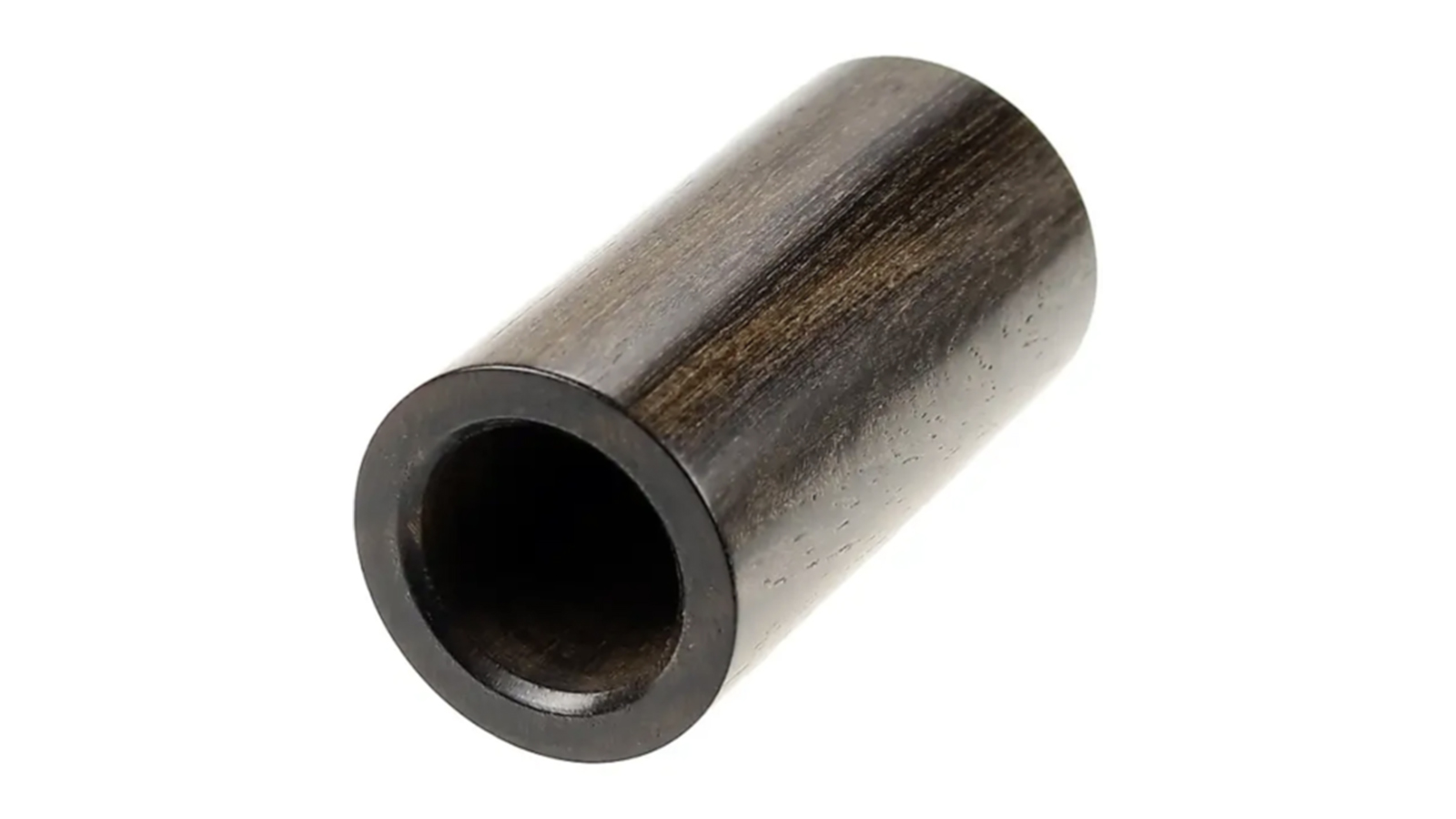
6. Taylor Ebony Guitar Slide
Our expert review:
Specifications
Reasons to buy
Reasons to avoid
Taylor creates these slides from ebony offcuts that don’t meet the exacting standards of their guitars. By doing so, wood isn’t wasted in the guitar manufacturing process and a sustainable practice is encouraged. The ebony comes from Taylor’s co-owned ebony mill in Cameroon, which was opened in 2011.
This is one of the lightest guitar slides on our list so for those who enjoy wide sweeping runs up and down the neck the light weight makes this easier. This slide has a unique tone, a lot duller than glass and we feel that those nuances are heard most clearly on an acoustic guitar.
Since it’s made from wood, no two slides have the same grain pattern and will be unique to themselves. However, since the wood grain is porous we did find it dragged a little bit on our guitar string windings compared to a glass or metal slide.
Best for beginners
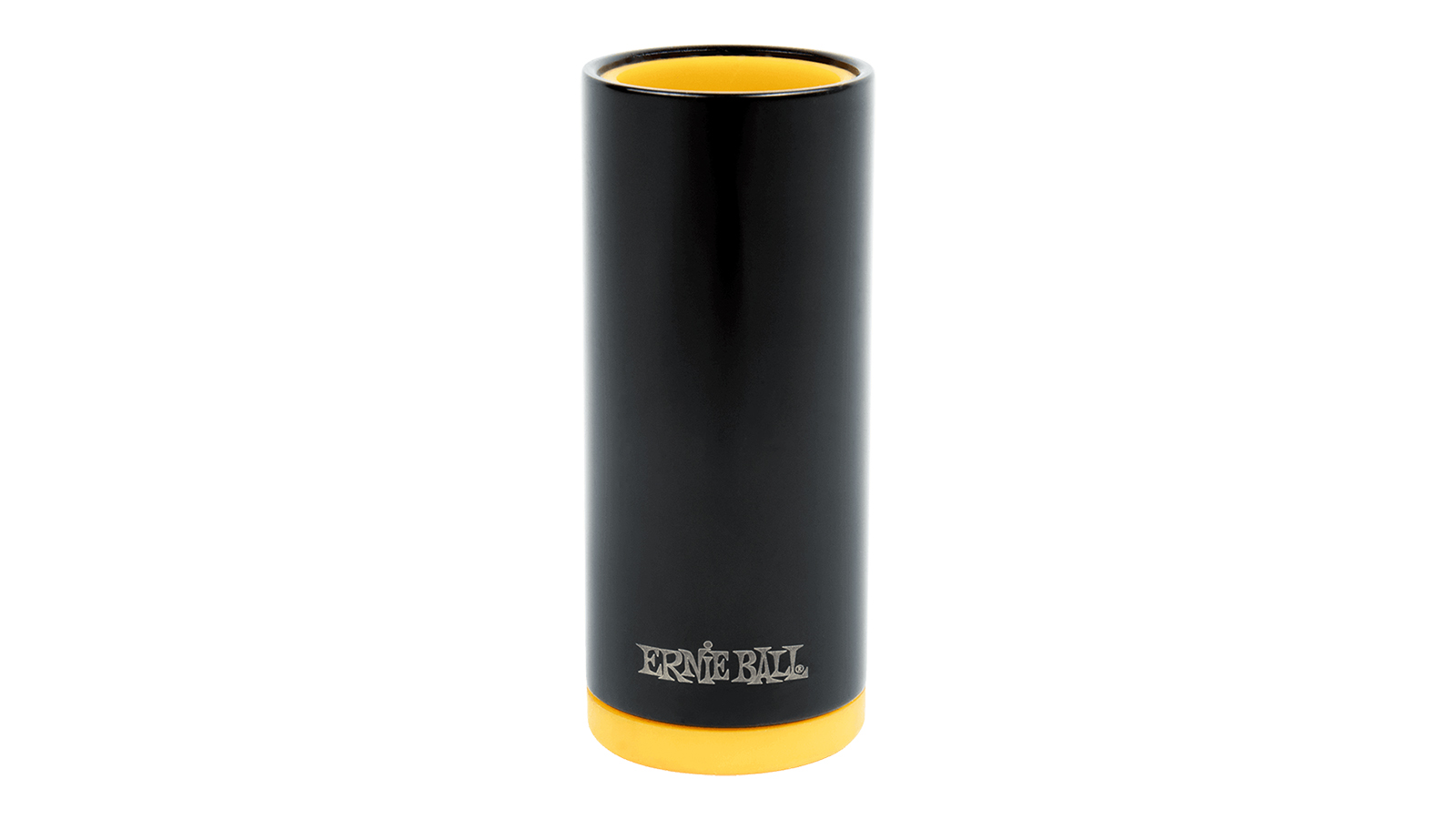
7. Ernie Ball Comfort Slide
Our expert review:
Specifications
Reasons to buy
Reasons to avoid
Released in November 2022, the Ernie Ball Comfort Slide is the company’s attempt at making slide guitar easier on your fingers. This slide comes with a padded inner sleeve, which piqued our curiosity and somewhat surprisingly, feels superb. The padding doesn’t distract and it stops the outer diameter of the slide from digging into your finger.
The slide’s material is chrome-plated brass, so it’s as zingy and punchy as you’d expect. With a solid build and eye-catching color options, this is a fun choice.
The thin walls make this slide ideal for a guitar with a lower action as it’s less bulky, easier to control and it’s less likely to rattle off the fretboard. We weren’t sure how much of a problem an unpadded slide was, but the option for a bit more comfort will appeal to some.
Best reversible
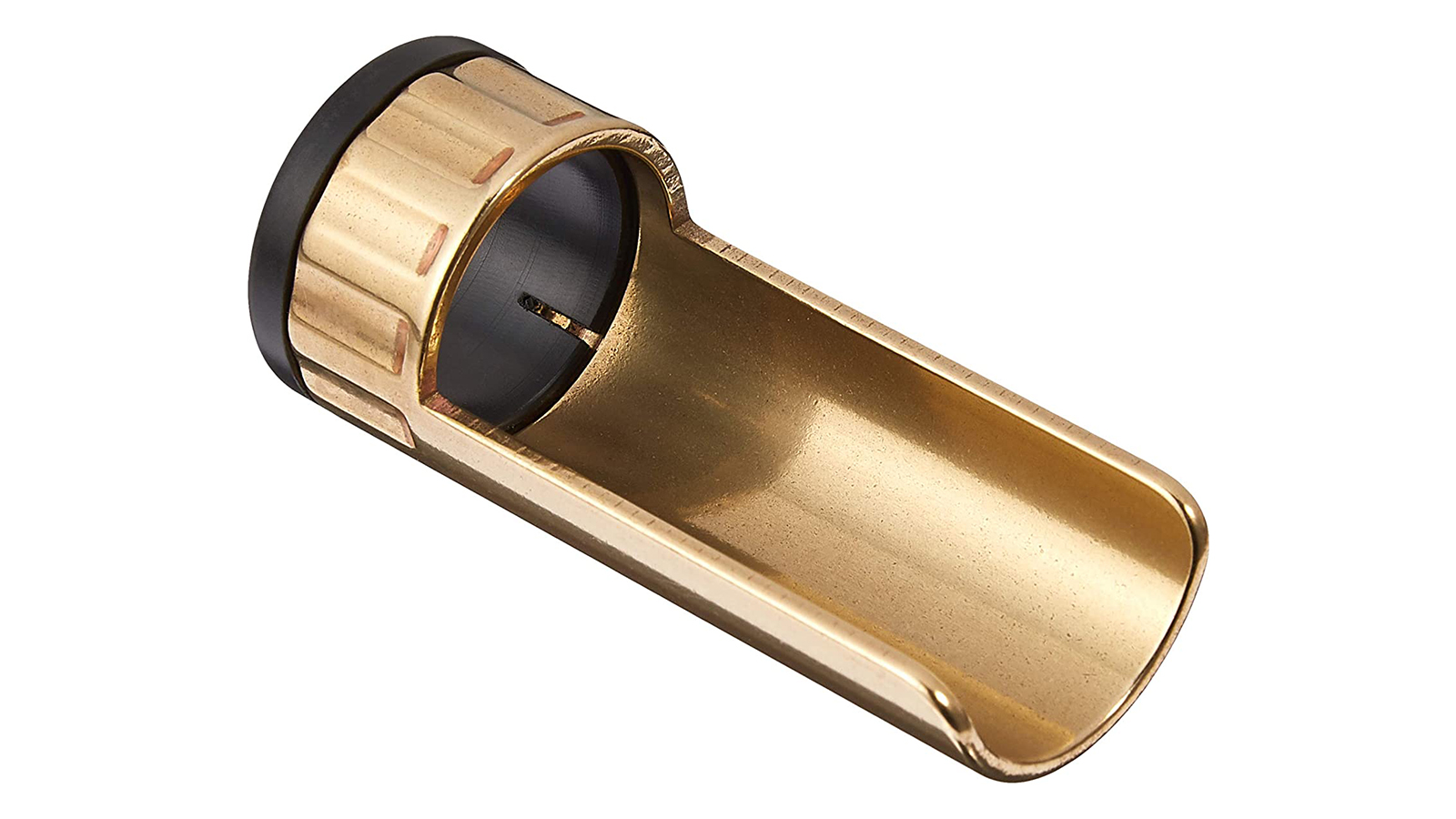
8. Shubb AXYS Reversible Guitar Slide
Our expert review:
Specifications
Reasons to buy
Reasons to avoid
Shubb is known for its great quality and robust accessories and the AXYS Reversible slide is no exception. This slide has been designed to sit comfortably on the back of your finger and, when you need to inject some magic, it can quickly rotate and you can slide away. The swing function is fluid, and after a bit of practice, it becomes rather an enjoyable manoeuvre.
That said, weighing in at 90.7 grams this is a heavy slide. An upside to that is the slide’s elongated sustain and resonance. The heavy weight also allows you to play quite aggressively which means you can dig in and play some strong vibrato parts as and when needed.
The slide comes with four different ring sizes, so you can choose what finger to use it with. Shubb recommends you play with the third finger for the most effectiveness.
Best bottleneck slide
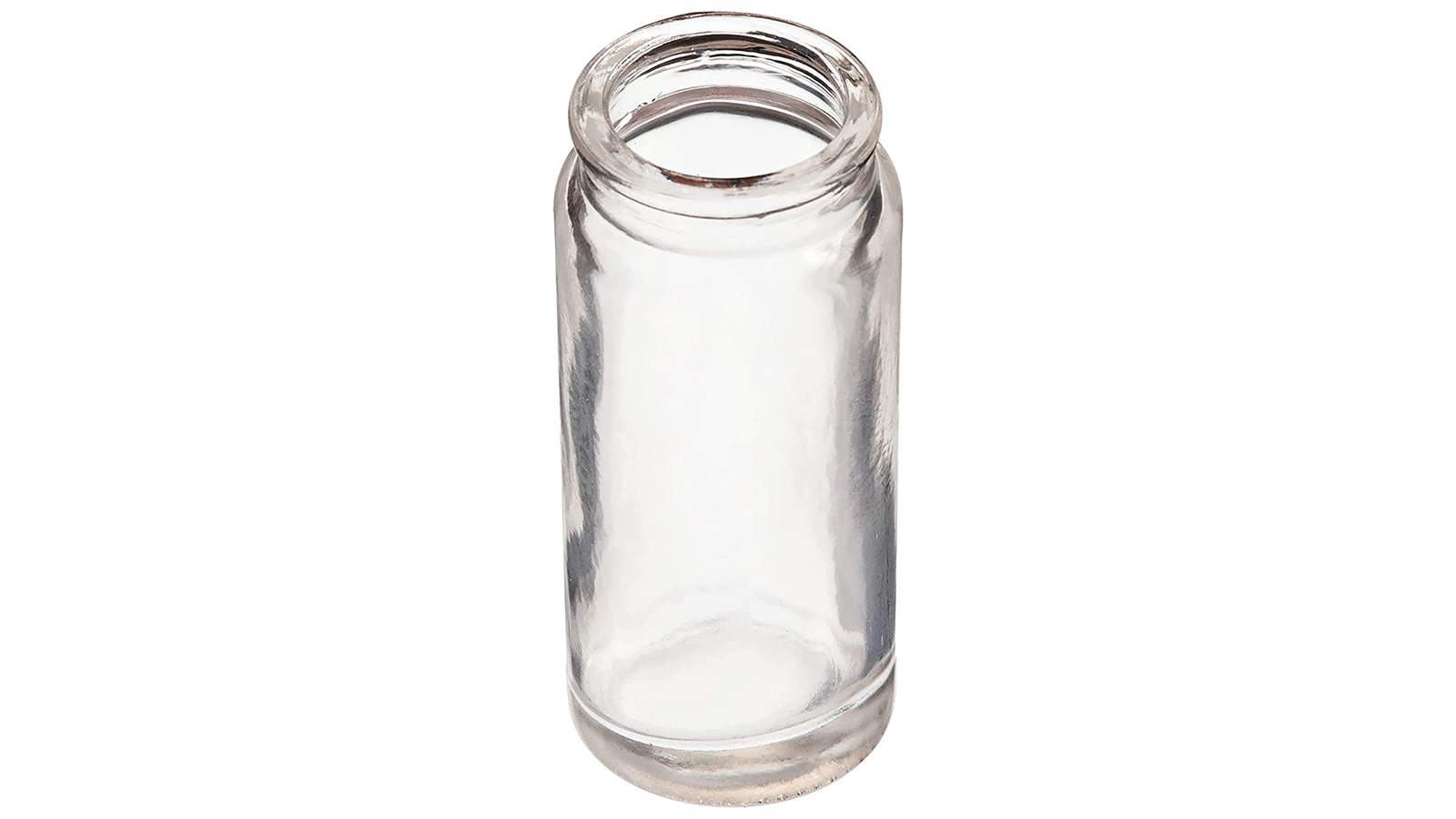
9. D’Addario Planet Waves Glass Bottle Slide
Our expert review:
Specifications
Reasons to buy
Reasons to avoid
If you’re into Duane Allman, then this is the slide for you. Legend has it, Duane was recovering from an elbow injury sustained from falling off a horse and was brought a bottle of Coricidin pills from his brother to help with the pain. After a few hours, and taking inspiration from Taj Mahal’s debut album, Duane had emptied the bottle, placed it around his finger and was jamming to the album. The rest, as they say, is history
Styled from an old medicine bottle, very similar to the glass Coricidin bottle Allman used, this Planet Waves slide is made from durable Pyrex glass. This slide isn’t just a retro gimmick, it glides over the strings really smoothly and produces a sweet rounded, warm tone.
It is quite a wide fit, so those with smaller fingers may find it hard to control as it isn’t the most snug. That said, it comes with a genuinely modest price tag, so if you are unsure about the design you won’t take much of a hit.
Spec comparison
Struggling to decide between some of the options? Well, our handy spec comparison table should help you narrow down your choices.
Model | Material | Sizes |
|---|---|---|
Ernie Ball Glass | Borosilicate glass | S/M/L |
MagSlide Magnesium | Magnesium | One size (ring size 9.5) |
Dunlop 222 Brass Slide | Brass | M/L |
Jim Dunlop Mudslide | Porcelain | S/M (rings sizes 7-9) |
Rock Slide Ariel Posen | Brass | One size (ring size 6-8) |
Taylor Ebony Guitar Slide | Ebony | 11/16”, 3/ 4”, 13/16”, 7/8” |
Ernie Ball Comfort Slide | Chrome-plated brass | S/M/L |
Shubb AXYS Reversible Guitar Slide | Brass | One size fits all |
D’Addario Planet Waves Glass Bottle Slide | Glass | L (ring size 11) |
FAQs
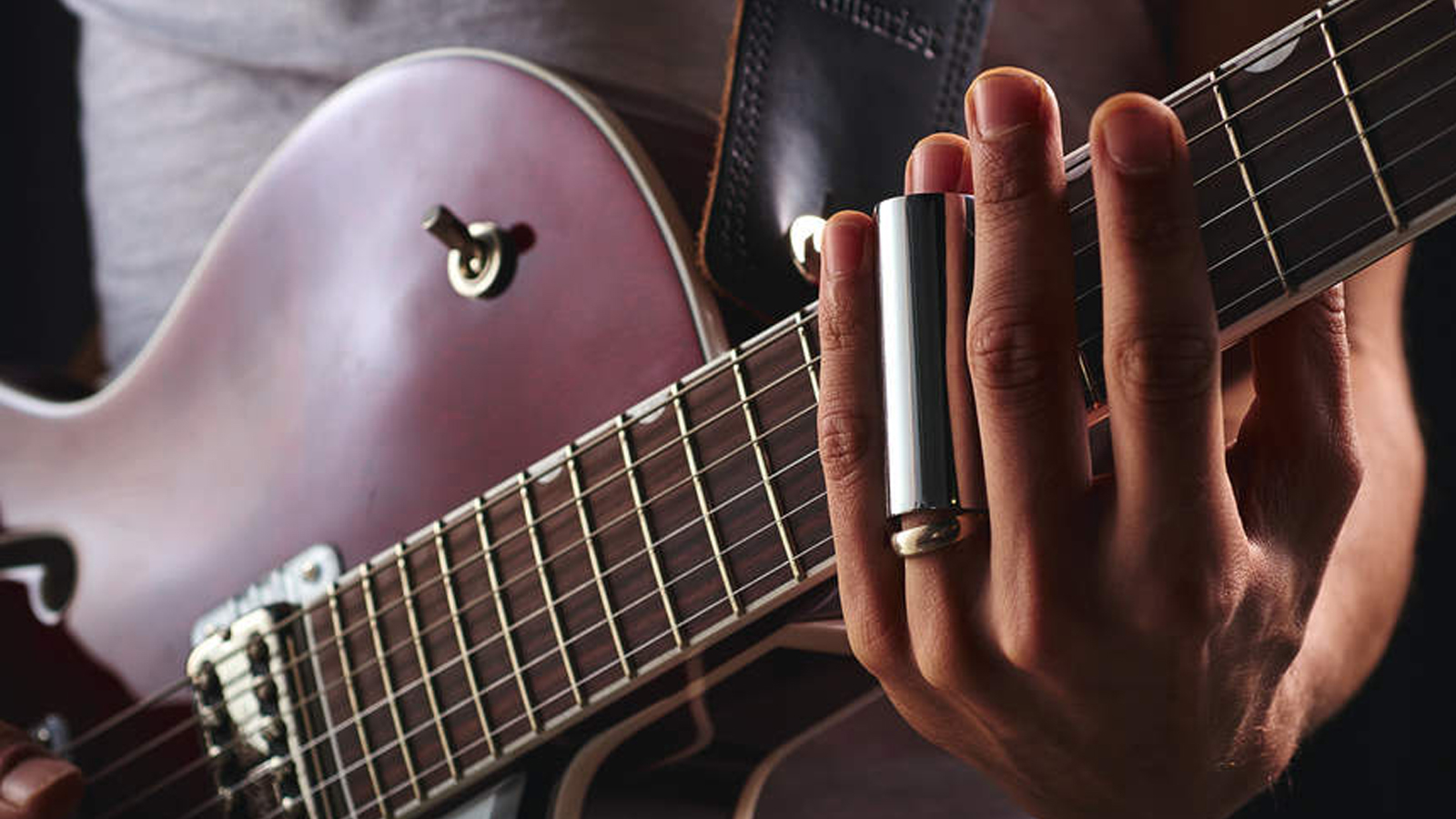
What slide material is best for me?
In the past, if you wanted to play slide guitar, you generally had two options: a glass slide derived from the neck of a wine bottle (or something a little stronger), or a metal slide cut from a pipe. Nowadays, there are multiple materials to choose from such as ceramic, magnesium and porcelain, all of which will give you a slightly different tone and playing feel.
How you want your playing tone to sound will influence what slide material to go for. There is no wrong decision, just take the time to consider what would sound good to your ears and perhaps what genre of music you are more inclined to play.
As a general rule, metallic slides will sound a little brighter and be raspier – in particular slides made of brass. Therefore, metal slides tend to be favored by rock ’n’ roll and electric blues players, who love their added bite. Metal is also denser than glass giving the added advantage of longer, more intense sustain.
A glass slide will have a warmer tone and a really smooth glissando between notes. Glass slides are a little less dense so will give you a bit less sustain. However, due to their buttery chime, glass slides pair really well with soulful, acoustic finger-style blues.
Ceramic slides sit somewhere in between and it is generally dependent on the mixture used in the ceramic. They are a little more unpredictable and will be raspier or smoother dependent on their construction.
Which finger is best for slide playing?
There are two fingers on which the slide is predominantly used, the ring finger and the pinky finger. Since most players will use the slide in combination with lead licks or chords, you will want to decide what playing fingers you are most confident with.
Some prefer the reach that playing with your pinky allows, so popping the slide on your third finger will free the pinky for those extra-long chord stretches. A lengthier slide will fit a bit more comfortably on the third finger and a shorter slide usually works best on the pinky.
Do you need a different slide for electric and acoustic guitar?
Generally speaking, you don’t need a different slide to use for your acoustic and electric. A slide is pretty universal and will work on both types of guitar. However, there are a few things to consider that may be beneficial.
Lighter slides that have slimmer wall thickness are often preferred for guitars with lower action, like electric guitars. This is because lighter slides can be easier to control and are less likely to rattle off the fingerboard and frets. If you predominantly play electric, you should consider this.
A heavier slide with thicker walls will produce more sustain, this is particularly beneficial for acoustic guitars as your notes aren’t amplified and can die off more quickly. Acoustics tend to have heavier strings and higher action, so a heavier slide is less likely to rattle the frets.
How we test
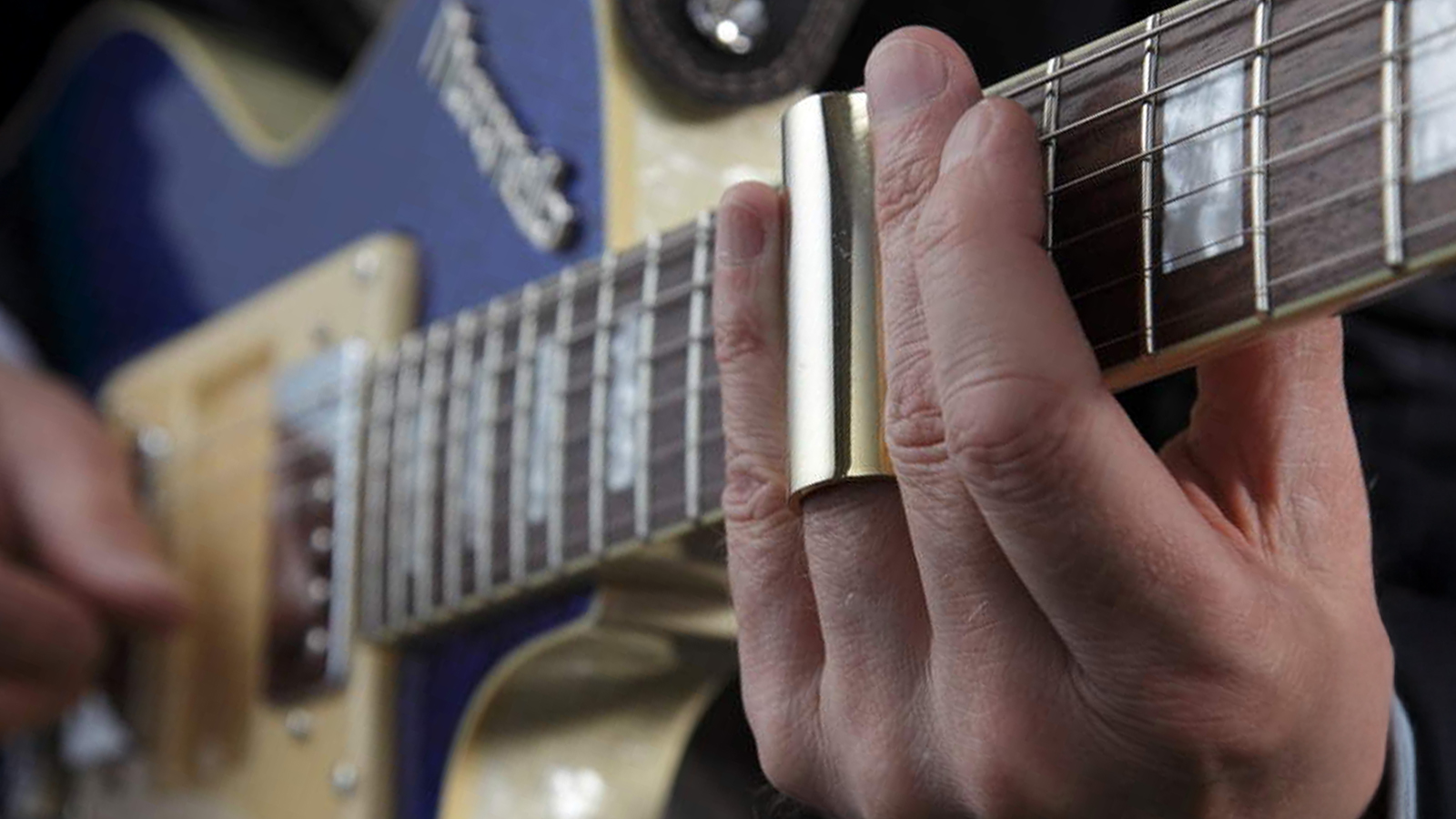
Guitar World is a leading authority in all things guitar gear, with a team of experienced musicians and experts who have tested and reviewed countless guitar products, including many guitar slides.
To create our list of the best guitar slides, we combine our practical experience, user feedback, and in-depth discussions with our editorial team to arrive at a consensus. We evaluate various factors such as pricing, comfort, and tone to ensure that we showcase the best guitar slides currently available on the market.
As guitar players ourselves, we know that a great slide can make a big difference in terms of expression. That's why we are committed to providing reliable and knowledgeable recommendations to help guitarists find the ideal slide to suit their specific needs and preferences.
Find out more about how we make our recommendations and how we test each of the products in our buyer's guides.
Related buyer's guides
You can trust Guitar World
- Best guitar picks: recommended plectrums to upgrade your playing
- Best guitar cables: instrument cords for electric, acoustic and bass guitar
- Best guitar capos for acoustic and electric guitar
- Best clip-on guitar tuners: stay in tune with 10 of the best
All the latest guitar news, interviews, lessons, reviews, deals and more, direct to your inbox!
Ross has been a music lover and guitar player since the age of 8. He has spent the five years since graduating from university working in music retail, selling guitars, amps and more. Ross is particularly interested in electric guitars, pedals and amplifiers and his current rig includes a trusty 2009 American Standard Stratocaster and Vox AC30S1 with a few Walrus Audio and Way Huge pedals in between.
- Daryl RobertsonSenior Deals Writer

